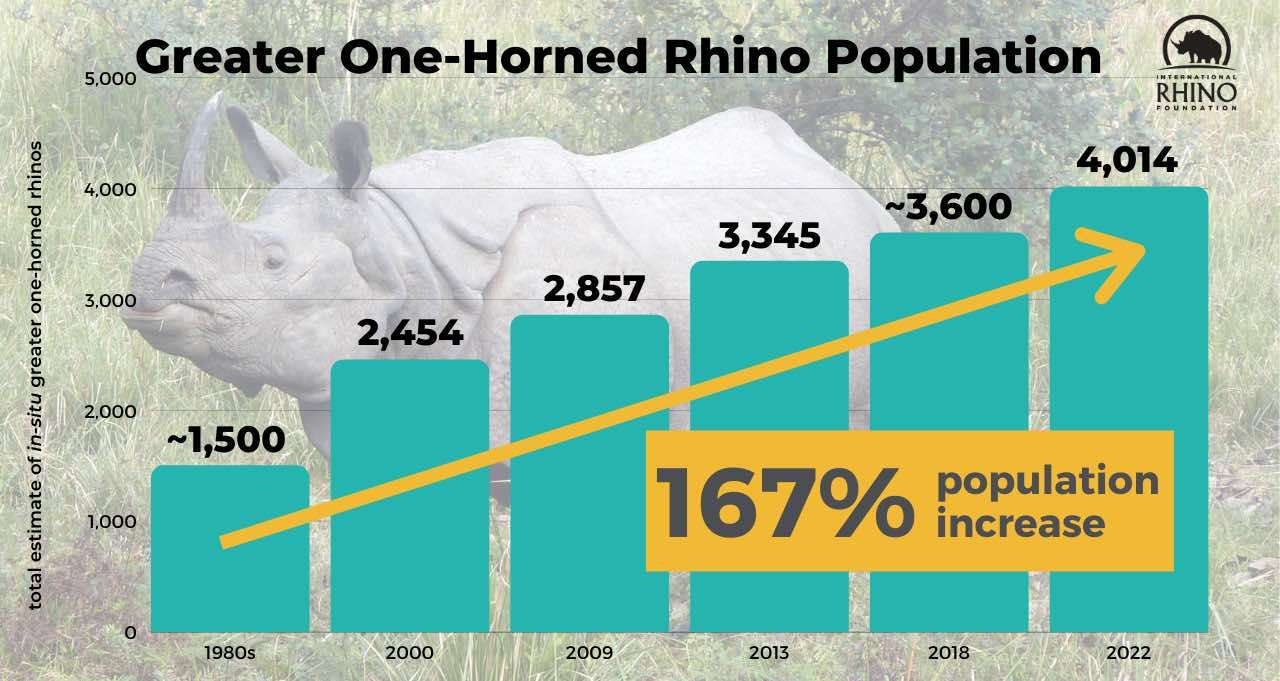We Finally Rid An Island of 300,000 Rats - Now Everything is Blooming
The beautiful island in the Tasman Sea has killed over 300,000 rats, saving a variety of plants and animals from extinction.

Confirmation from India came this week hailing a conservation success story for the greater one-horned rhino.
The International Rhino Foundation announced the milestone, reporting that the population now numbers 4,014 individuals-up from just 100 individuals 50 years ago.
The government of Assam, the state in India that is home to 70% of the population, just completed its biannual rhino census, saying the greater one-horned rhino total has increased by 274 rhinos since the last count.
Helped by a baby boom during the pandemic when many protected areas were closed to visitors, Nepal is the only other country where the species exists.
"For an animal that was once perilously close to extinction, numbering fewer than 100 individuals, this recovery is truly remarkable," said the IRF in a fundraising plea.
Thanks to strict protection and conservation measures enacted by regional and national-level governments in India and Nepal, the greater one-horned rhino's recovery provides a blueprint of hope for other rhino species.
The population is growing because the governments of India and Nepal have given rhinos the space they need to breed, while also preventing poaching deaths. Over the past three years, the government of Assam has more than doubled the area of Kaziranga National Park (home to the world's largest greater one-horned rhino population) from 430 square kilometers to 1,040.
"The overall growth in population size is indicative of ongoing protection and habitat management efforts by protected area authorities, despite challenging contexts these past years," said Ghana Gurung, Country Representative of WWF Nepal.
Earlier this year, it announced plans to increase Orang National Park by about 200 square km. With NGO partners, including the International Rhino Foundation, the government of Assam initiated translocation of rhinos within protected areas of Assam to give rhinos more room to breed. All rhino bearing protected areas are also closed to visitors during breeding season.
IRF also works with local NGOs-Aaranyak (in India) and The National Trust for Nature Conservation (in Nepal)-to control invasive plant species and assist native grasses to recover rhinos' shrinking habitats. The end result of all of these programs is more space for rhinos and more rhino babies being born.

At the same time they're expanding rhino habitats to increase population growth, the two Asian governments are also prioritizing rhino protection and enforcement of wildlife crime laws to reduce deaths.
IRF supports them by purchasing vehicles and equipment needed for anti-poaching patrols and providing training for forest guards and other law enforcement officers on wildlife law, crime scene investigation, evidence collection and case preparation.
SHARE The Baby Boom News With Rhino Lovers on Social Media…
Be the first to comment